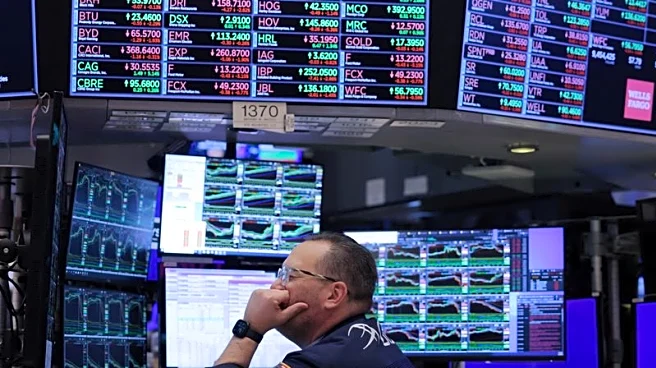What's Happening?
Nine major European banks have formed a consortium to develop a euro-denominated stablecoin, aiming to strengthen Europe's position in the digital asset ecosystem and counter the dominance of U.S.-backed
stablecoins. The initiative is supported by Strategy& and PwC, and includes banks such as UniCredit, ING, and CaixaBank. Stablecoins are cryptocurrencies pegged to fiat currencies like the dollar or euro, offering price stability. Currently, the largest stablecoins are Tether (USDT) and Circle's USDC, both pegged to the U.S. dollar, with euro-backed stablecoins representing a much smaller market. The consortium seeks to provide a European alternative, leveraging blockchain technology for efficient and transparent digital payments.
Why It's Important?
The development of a euro stablecoin is significant as it represents Europe's strategic move to gain autonomy in the digital payments landscape, which is currently dominated by U.S.-backed stablecoins. This initiative could potentially shift the balance in the global stablecoin market, offering Europe a competitive edge. The European Central Bank has expressed skepticism towards privately issued stablecoins, advocating for a digital euro. However, the consortium's stablecoin could play a vital role in the financial ecosystem, enabling near-instant, low-cost cross-border transactions and programmable payments, thus enhancing efficiency in supply chain management and digital asset settlements.
What's Next?
The euro stablecoin is expected to launch in the second half of 2026 under the EU's Markets in Crypto-Assets Regulation framework. The venture will be managed by a Netherlands-based company, licensed and supervised by the Dutch Central Bank. As the project progresses, it will be crucial to observe how it competes with existing stablecoins and whether it can gain traction in a market traditionally dominated by non-bank entities. Additionally, U.S. banks like Bank of America and Citigroup are exploring their own stablecoin initiatives, which could further influence the competitive landscape.
Beyond the Headlines
The launch of a euro stablecoin could have broader implications for the global financial system, potentially challenging the U.S. dollar's dominance in digital currencies. It may also prompt discussions on regulatory frameworks and the role of central banks in digital currency issuance. The initiative highlights the growing importance of blockchain technology in financial transactions, offering transparency and efficiency. As stablecoins become more integrated into financial systems, they could reshape traditional banking and payment infrastructures, leading to long-term shifts in how financial services are delivered.












